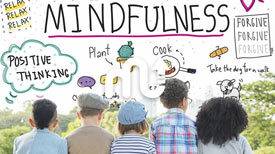10 Classroom Mindfulness Activities for Students
It can be very hard to calm a class full of children, especially when they’re bored. But, what if we told you that we have a secret for that?
Mindfulness is the state of mind when you’re being conscious or aware of something. It helps you calm down and have a better understanding of your thoughts and emotions. And mindfulness activities for the classroom are a perfect way to achieve it.
Mindfulness is an important exercise that children should be encouraged to apply. What better way is there to convince them to do so than games! 🙌
MentalUP is an educational gaming app that has 150+ games to support the mental development of children. It also features 240+ physical games to support children do their daily movements. 🧠🤸
The mindfulness games offer a fun area and practical way to help your children achieve mindfulness. There are also games that boost memory, enhance focus, and so much more! 🤩✨
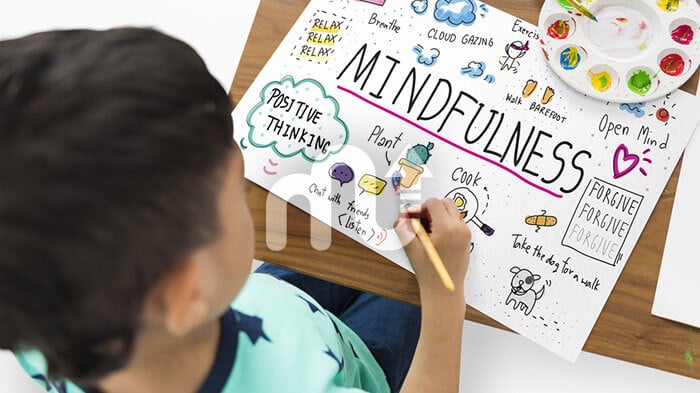
Benefits of Teaching Mindfulness in the Classroom
Promoting mindfulness in the classroom is not only a way to calm the students as mindfulness education has many other benefits for them. Here are some of the benefits of mindfulness for children according to the APA (American Psychological Association):
- Reduced overthinking
- Reduced stress levels and anxiety
- Working memory boost
- Enhanced focus
- Less emotional (more logical) reactivity
- Functions as a childhood obesity prevention strategy
- Calmness
- Cognitive flexibility
- Improved social relationships
- Increased immune system
- Improved well-being
- Increased information processing speed
- Decreased task effort
- Empathy
- Compassion
- Raises awareness of emotions
- Raises self-awareness
- Reinforces intrapersonal intelligence
As you can see, mindfulness has many mental, psychological, social and physical benefits. Therefore, the importance of mindfulness for students can’t be overstated.
We gathered the 10 best mindfulness activities for the classroom to be able to adapt mindfulness education to children’s lives.
10 Classroom Mindfulness Activities
You can provide mindfulness in elementary education by including fun mindfulness class activities into the curriculum. We’ll start with one of the most basic mindfulness practices for students breathing.
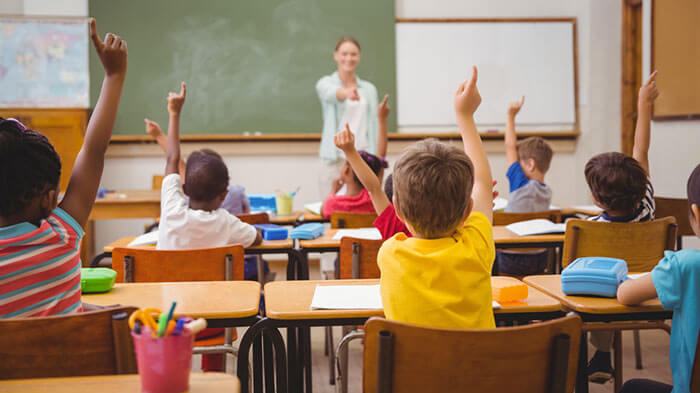
1. Shark Fin Breathing Exercise
You can start teaching mindfulness in the classroom with this easy exercise. It’s also one of the fun mindfulness activities for kindergarten.
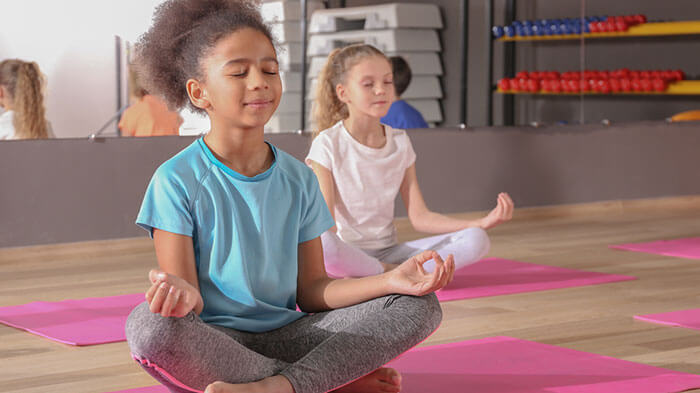
Benefits
Shark Fin breathing exercises are perfect for facilitating calmness quickly and spontaneously and for helping kids sort out their thoughts and feelings while relaxing the body. It helps focus on the “now”. You can also use it as one of a great warm up games for kids before longer mindfulness activities for students.
Duration
This exercise will take 2 minutes at most. We told you it was quick.
How to Apply
- Students can sit down on a chair, floor or comfortable surface, and close their eyes.
- Tell them to place their thumb on their forehead with their other fingers pointing to the sky like a shark fin. Their palm should be looking towards their side.
- They should take a deep breath and move their hand slowly down from their forehead to their chest, keeping the 5-S’s in mind:
- Sit straight
- Still
- Silent
- Soft breathing
- Shut eyes
- Breathe in and out a few more times.
- They can open their eyes; encourage them to notice how they feel.
2. Mindful Breathing Colors Exercise
Mindful breathing colors exercise is one of the creative mindfulness techniques for the classroom.

Benefits
Children will calm down and let go of their unhealthy thoughts and feelings. It will also help kids manage stress and overcome anxiety.
Duration
This exercise will take 5 minutes.
How to Apply
- Ask students to assign colors to their feelings. First, start with a relaxing positive color.
- Then, ask them to think of a color that represents stress, sadness, or anger, or whichever of those emotions is most relevant or suitable for your students’ age group etc.
- Students start breathing. When they breathe in, they imagine inhaling the relaxing color and visualize it filling their lungs.
- When they breathe out, they imagine exhaling the stress, sadness, or anger color out of their body.
3. Mindful Breathing Exercise
Mindful breathing exercises are another example of quick mindfulness activities for the classroom.
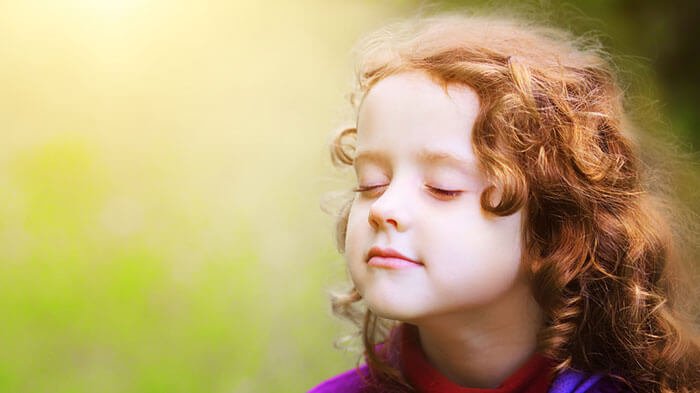
Benefits
Mindful breathing enables students to be present, improve their concentration and sort out their feelings.
Duration
This exercise is one of the 5 minute classroom mindfulness activities.
How to Apply
- Students can choose either standing or sitting for this activity.
- Ask students to put both their hands on their belly. If you want, you can give out small wooden blocks or similar items to place on their belly as well.
- Students can close their eyes, stare at the ceiling or look down to their hands.
- Guide students in taking three slow deep breaths in and out to see if they can feel their hands or the object on their belly moving with the air flowing through their bodies.
- You may like to count for each breath. Count “one” when inhaling, “two” while exhaling. Count “three” with another breath in and “four” with the following breath out.
- Complete counting after 5 minutes. You may want to set up a timer to keep track of time.
Encourage students to think about how the breath feels. It is important that they only focus on breathing and that their minds don’t wander off during the exercise.
Mindfulness exercises help improve children’s focus and attention span. However, there are other practices designed for the sole purpose of improving children’s attention, focus, and concentration skills. MentalUP is one of them with its learning games and workouts for kids.
MentalUP is a pedagogically certified app that has 150+ games that, from improving concentration to boosting visual intelligence, all have their specific goals. You can create a plan based on the skills your children need improvement and easily track their progress.
4. Mindful Body Scan Exercise
Such ideas for mindfulness in the classroom are perfect to practice in class because students can take them home. Better yet, ask them to teach their parents the mindfulness exercises they learn in class.
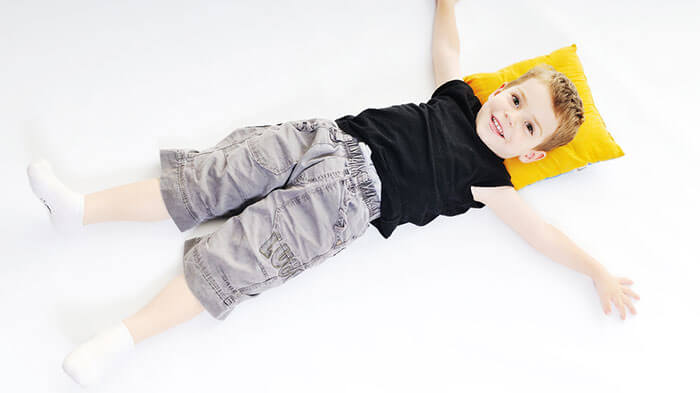
Benefits
Need a time out? Mindful body scans help children relax, focus on bodily sensations, and calm their minds. It is also one of the exercises that are perfect before bedtime.
Duration
This exercise takes about 10 minutes.
How to Apply
- Students should lie on the floor, with their hands and arms placed slightly apart from their bodies. It is better if they close their eyes but it’s okay if they prefer to look at the ceiling instead.
- Encourage students to pay attention to their feet for 5 to 10 seconds.
- Tell them to move their focus on to their toes, then ankles, then calves and knees. Continue focusing on each body part until you reach the head.
- Ask your students how each part of the body feels to bring their awareness to their bodies and to the moment.
- If they feel any tightness or stress, tell them to imagine breathing the stress out of that part of the body with each exhale.
You may ask questions like “How do your arms feel?”, “Are your hands cold or warm?” to draw the student’s attention to the body scan and amplify the benefits of mindfulness for children. Also, you can always benefit from appropriate mental health apps to make this exercise easier.
5. Mindful Eating Exercise
It’s snack time! This is one of the mindfulness strategies for the classroom that helps us notice actually how mindlessly we do things. You will be able to teach them that it is better to savor and enjoy a bar of chocolate instead of gobbling it in less than a minute.
This exercise is best for 3rd graders and up. Be careful with foods that are choking hazards and beware of allergies.
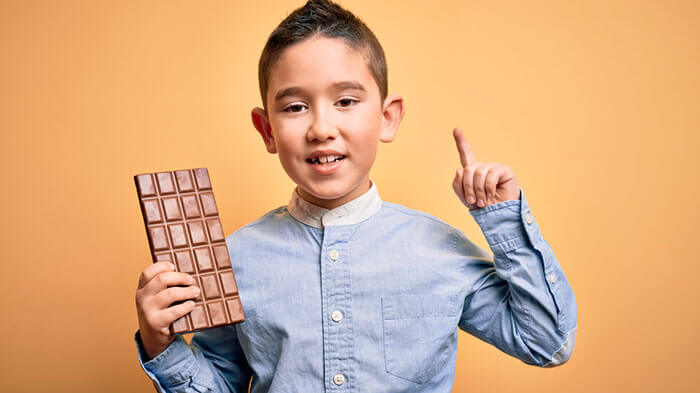
Benefits
Mindful eating can combat overeating as it helps us realize how much and what exactly we eat. It allows focusing on the flavors and tastes of different foods and noticing what effects different foods have on how our bodies feel. It also builds the capacity for stillness and mindful focus.
Duration
Mindful eating exercises take about 5 minutes.
How to Apply
- First, choose your food. A piece of candy or chocolate, a small fruit like grapes or strawberry, or a raisin will do. Be sure that none of your students are allergic to your choice of food.
- Have the students put the food in their mouths. The key is that they can’t chew it or swallow it.
- Have them savor the flavor. Can they feel the aroma released in their mouths while they breathe?
- For three minutes, students should focus on the candy melting in their mouths slowly or the raisin watering their mouths.
- After 5 minutes is up, they can chew and swallow.
Mindfulness is about being present, so if their thoughts drift away, tell them to simply bring them back to the candy.
6. Mindful Walking Exercise
Ready to get out of the classroom? This activity is best completed outdoors and if suitable, students may walk barefoot to have a more intense experience. To ensure safety, give students a clear boundary for where they can walk during this exercise.

Benefits
These kinds of outdoor activities for kids, such as mindful walks, help children sort out their feelings and thoughts while calming the mind. It also helps them reduce stress and anxiety. Try it with your elementary students.
Duration
A 10-minute walk will be enough for this mindfulness exercise.
How to Apply
- Each student should select a small area where they can walk in a line for about 5 or 6 steps and back to where they started without interfering with others.
- First, take three deep breaths, or apply Shark Fin exercise (#1 exercise in this list)
- Tell your students to take 5 or 6 steps in one direction, then slowly turn to the opposite way, and finally take 5 or 6 steps back to where they started.
It will be more effective if the students focus on the following during the exercise:
- What is the texture of the surface under their feet?
- Which part of their foot touches the ground first when they take a step?
- Does their body feel heavy or light?
- How do they walk? Are they slouching or dragging their feet?
- How is their posture? Are they standing straight?
- How naturally does their body move?
You can also discover PE games to strengthen kids’ mindfulness skills and bodies besides walking!
7. Mindful Hearing Exercise
There is a difference between hearing and listening, whereby hearing is just the bare perception of sound by the ear and listening is a conscious action of processing that stimulus. Thus, the lack of listening skills is one of the main reasons children can experience learning difficulties. Try mindful hearing, an exercise that helps develop listening skills. It teaches children to concentrate on what they hear and to start actively listening to it.
Later on, ask your students to apply this exercise to your voice and concentrate on what you say when they feel disconnected to the class. You can apply it to students of all ages.

Benefits
As mindful hearing will help calm the body, it will also help improve listening and concentration skills. It is also one of the quick mindfulness activities for the classroom and perfect for sudden anger, cry bursts, and other raging emotions.
Duration
This exercise will only take 2 minutes.
How to Apply
For this exercise, you will have to guide the students and you’ll need something that makes a bell sound (you can easily find apps that provide a bell sound if you don’t have one). Here are the instructions that you should give before ringing the bell:
- Once I ring the bell, concentrate only on the sound that you hear.
- Close your eyes. Try to notice if you hear the sound louder in one ear than you do in the other.
- If you notice your thoughts are wandering, simply bring your attention back to the sound of the bell and tune out other noises.
- Keep your eyes closed until the sound is completely gone.
- After you open your eyes, remain silent until you hear my voice again.
Here is how the students should apply it:
- Begin with three deep breaths.
- The students should close their eyes when the teacher rings the bell.
- The exercise is completed when the sound has completely faded.
8. Mindful Senses Exercise
This mindful exercise for the classroom is better for students in middle school and up. You can even apply it to college students or adults.
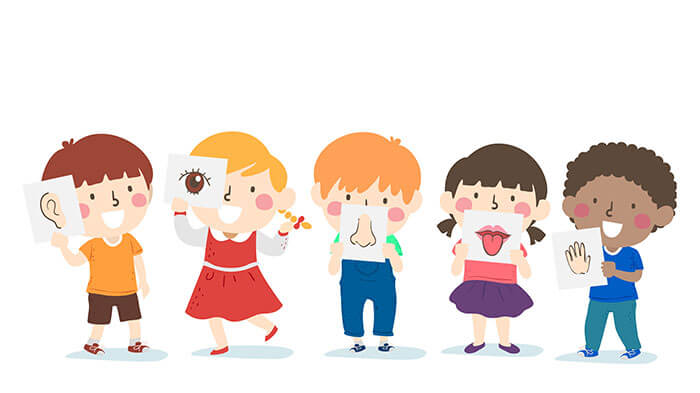
Benefits
It can be used to help calm a busy mind, reduce stress, and bring our awareness to the “now”. It also helps improve concentration.
Duration
5 minutes for 5 senses.
How to Apply
This exercise is quite simple. All you have to do is close your eyes and think of (and focus on):
- 5 things you can see that you normally wouldn’t care to see
- 4 things you can touch that you normally wouldn’t care to touch
- 3 things you can hear that you normally wouldn’t care to hear
- 2 things you can smell that you normally wouldn’t care to smell
- 1 thing you can taste that you normally wouldn’t care to taste
All things and activities require a certain amount of concentration and attention from us - from basic ones like noticing a blooming flower on your way to school or work, to more demanding ones like doing homework or attending a meeting at work. You or your children may be missing out on a lot of things if you have problems concentrating and paying attention.
MentalUP is an educational app with over 10+ million users worldwide. Children and adults can pick their age and areas that need improvement to form their personalized program.
9. Mindful Gratitude Exercise
Expressing your gratitude for things is not only good for mindfulness, but it will also help children have a more positive attitude towards life. This activity is best for students who will be comfortable enough to write down things such as 4th graders and up.

Benefits
Writing down your gratitude for the day will help develop compassion, empathy and tolerance for others while giving a chance to reconsider your thoughts and actions throughout the day.
Duration
It will take about 5-10 minutes. It is important to do it every day and to assign a specific time for it. For example, it could be the first thing when the class starts, after lunch or a little before the end of the day.
How to Apply
- Students can make a Gratitude Journal out of a notebook or a folder and paper.
- Ask your students to take five minutes to think of something that they feel grateful for today. If your students can’t come with any, here are some friendly reminders of things they can be grateful for:
- An act of kindness that they received from someone that day.
- A person in their lives that they appreciate.
- An activity or hobby that they like to pursue.
- A skill or ability they have.
- A part of their body that they are grateful for.
- An item that they love.
- Something that happened that day that made them laugh.
10. Mindful Safari Exercise
There are so many beautiful things out there in nature that we just pass by without even noticing. Take your students out for a mini safari adventure where they will get to be a piece of it. And it’s not only for the little ones! This exercise can also provide mindfulness for high school students as one of the most preferred co-curricular activities.
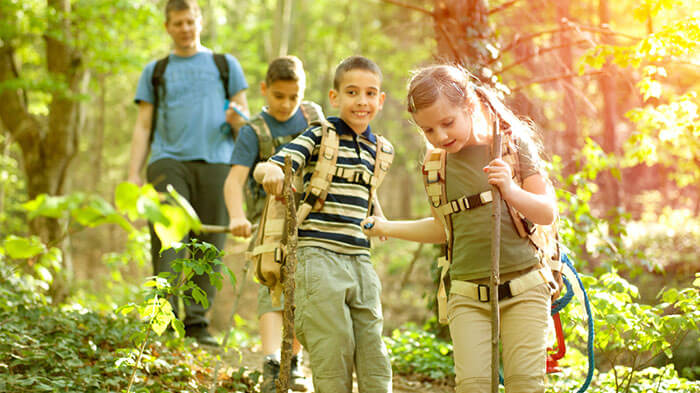
Benefits
This mindful safari which is among the most effective balance exercises for kids, will enable students to enjoy the present moment and appreciate other living beings around them. This way, they will inevitably arouse a feeling of calmness and relaxation.
Duration
It can take 10-30 minutes depending on the size of the area you’re discovering and the interesting things the children encounter.
How to Apply
- Ask the students to remain quiet, calm their thoughts, and move slowly while on safari.
- Tell them to try to enhance their sense of sight, touch, and sound to be able to pay close attention to their surroundings.
- Together, search for beautiful natural objects that you can explore. When you find one, ask your students to examine it while asking themselves questions like:
- What does it look like?
- What color is it?
- What does it smell like?
- Can I touch it?
- What does it feel like?
- Search for other residents and moving creatures of nature.
- When they do find a moving creature, encourage them to quietly watch the creature and examine how it moves, the colors on it, and other details that identify it.
🎁 BONUS: If you’re looking for more practices for students, check out our mind games! They will teach children patience, strategic thinking, and how to reduce stress and can help them improve their developmental skills. Also, kids can enjoy playing unblocked games for school by themselves safely.




